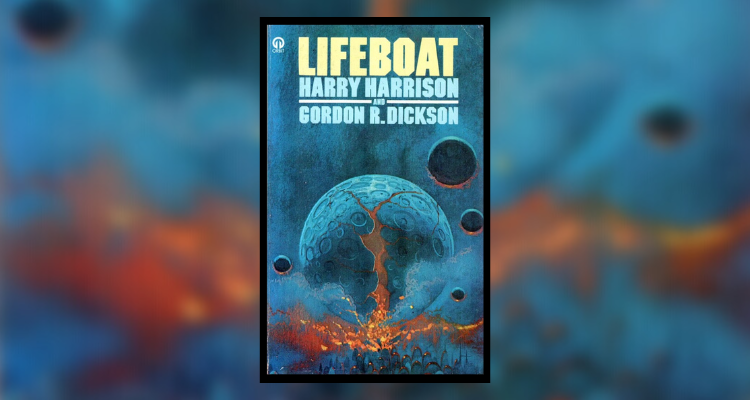|
This short collaborative novel, originally serialised in Analog magazine in 1975, focuses on humans and aliens trapped together in a cramped interstellar escape module. Despite a promising start, Harrison and Dickson struggle to wring much interest out of this concept.
Collaborative novels are an interesting prospect. Quite rare today but relatively common in the 1970s, they provide a test of how two authors’ styles and sensibilities can mesh or clash. Lifeboat combines the talents of two notable North American writers, and has a promising beginning, but is ultimately hamstrung by its constrained setting.
In the far future, humans have spread beyond Earth to a number of other planets. This success has come at a cost, however. First, human society is intensely stratified into a rigid caste system and there is precious little in the way of freedom. Most humans are “arbites”, essentially slaves bred for specific tasks. Second, humans are forced to rely on the Albenareth, a race of inscrutable aliens, in order to maintain their space faring civilization. Only the advanced but decaying starships of the Albenareth make it possible to travel efficiently between worlds. Lifeboat spins a tale based on these two serious drawbacks to its view of humanity’s future. The book opens with a disaster - an Albenareth ship travelling to the colony world of Belben is severely damaged, and later destroyed, by a massive bomb smuggled aboard. Only two Albenareth crewmembers and several humans survive, by reaching a warp drive-equipped lifeboat just in time. The main protagonist is the human man Giles Steel Ahsad. He is not an arbite, but an “Adelborn”, a member of a specially bred management class. Giles becomes the de facto leader of the humans cramped inside the lifeboat. He gives orders to the arbites, and is the only one able to speak with the two aliens, normally known only as the Captain and the Engineer. Lifeboat quickly becomes a kind of survival story. During the long journey through space, the characters face numerous technical, psychological, navigational, nutritional, and even philosophical crises that threaten all of their lives. The theme of being trapped in a confined space and facing one disaster after another strongly recalls A Fall of Moondust (1961) by Arthur C. Clarke. Harrison and Dickson do generate some tension from these incidents, as contrived as some of them can seem. In one instance, a supposedly vital page from an ancient Albenareth navigational text is lost because a human has eaten it. He did this because a futuristic drug named “tonk” is always consumed with paper! On another level, the book serves as a mystery. In a way that recalls an Agatha Christie story, the survivors on board the lifeboat each have their own hidden agendas and ulterior motives. These link not only to the destruction of the spaceliner, but even to the future path of the human and Albenareth civilizations. Unfortunately, this devolves into a hurried series of reveals that make up the book’s conclusion - plot and counter plot, at least three covert organisations, and a succession of gunpoint accusations and recriminations which aren’t very satisfying. The book does have some interesting ideas and themes. For example, the emergency capsule has a special vine to produce food and water, instead of the usual life support systems. The Albenareth are somewhat intriguing aliens, who think of themselves as “the holy race”, and who view interstellar travel with religious reverence and see it as the highest possible honour to die in space. Ultimately though, Lifeboat is a middling ‘70s science fiction novel. Harrison and Dickson seem to have worked together smoothly enough, but the book should be sought out only by their most diligent fans. It perhaps shouldn’t be surprising that the two authors did not collaborate again.
0 Comments
Your comment will be posted after it is approved.
Leave a Reply. |
About
I write about classic science fiction and occasionally fantasy; I sometimes make maps for Doom II; and I'm a contributor to the videogames site Entertainium, where I regularly review new games. Categories
All
|
